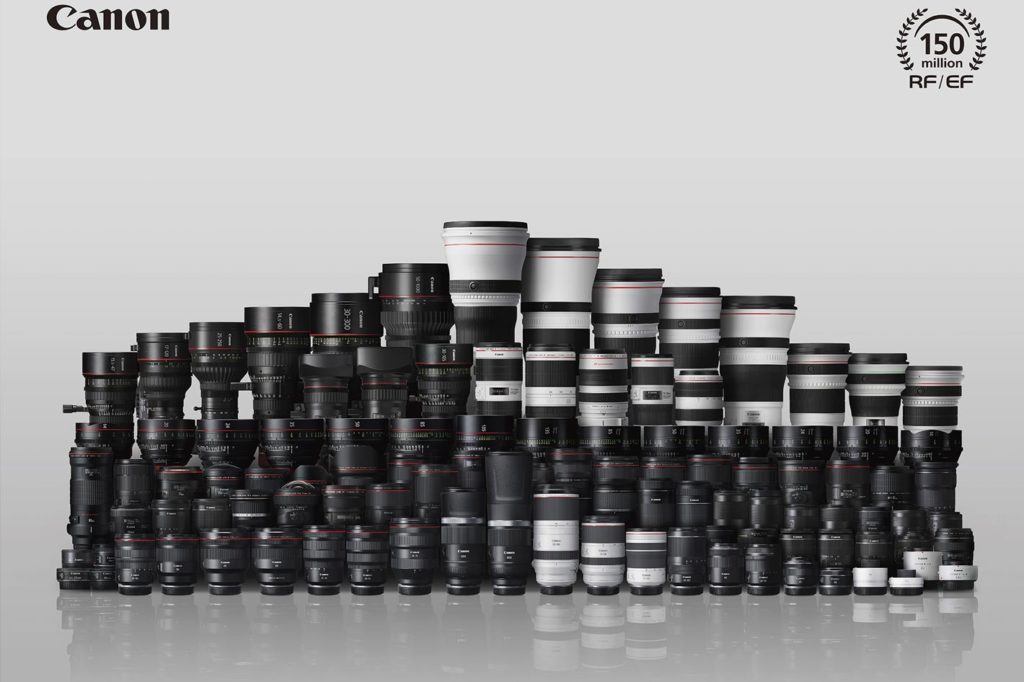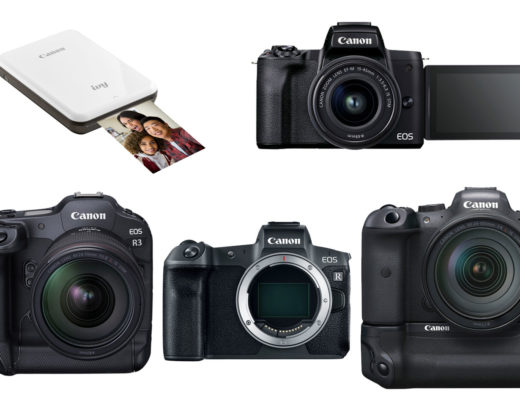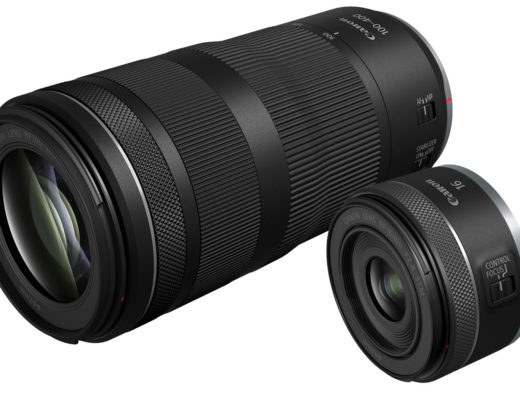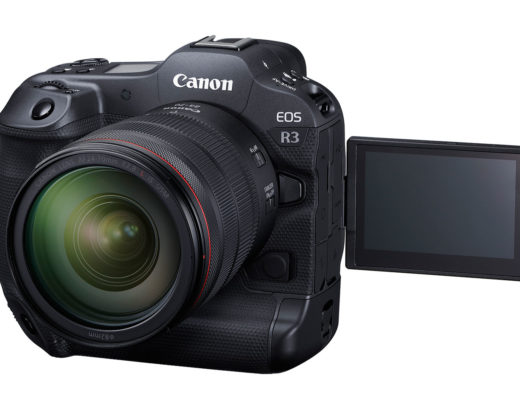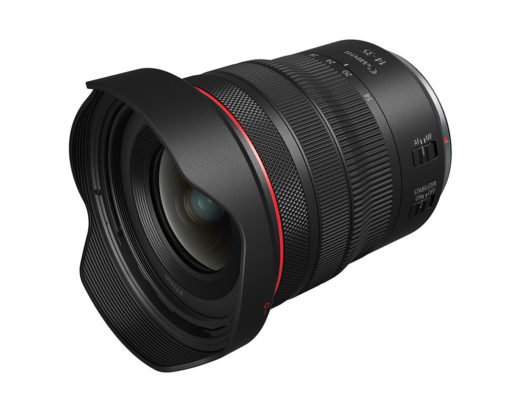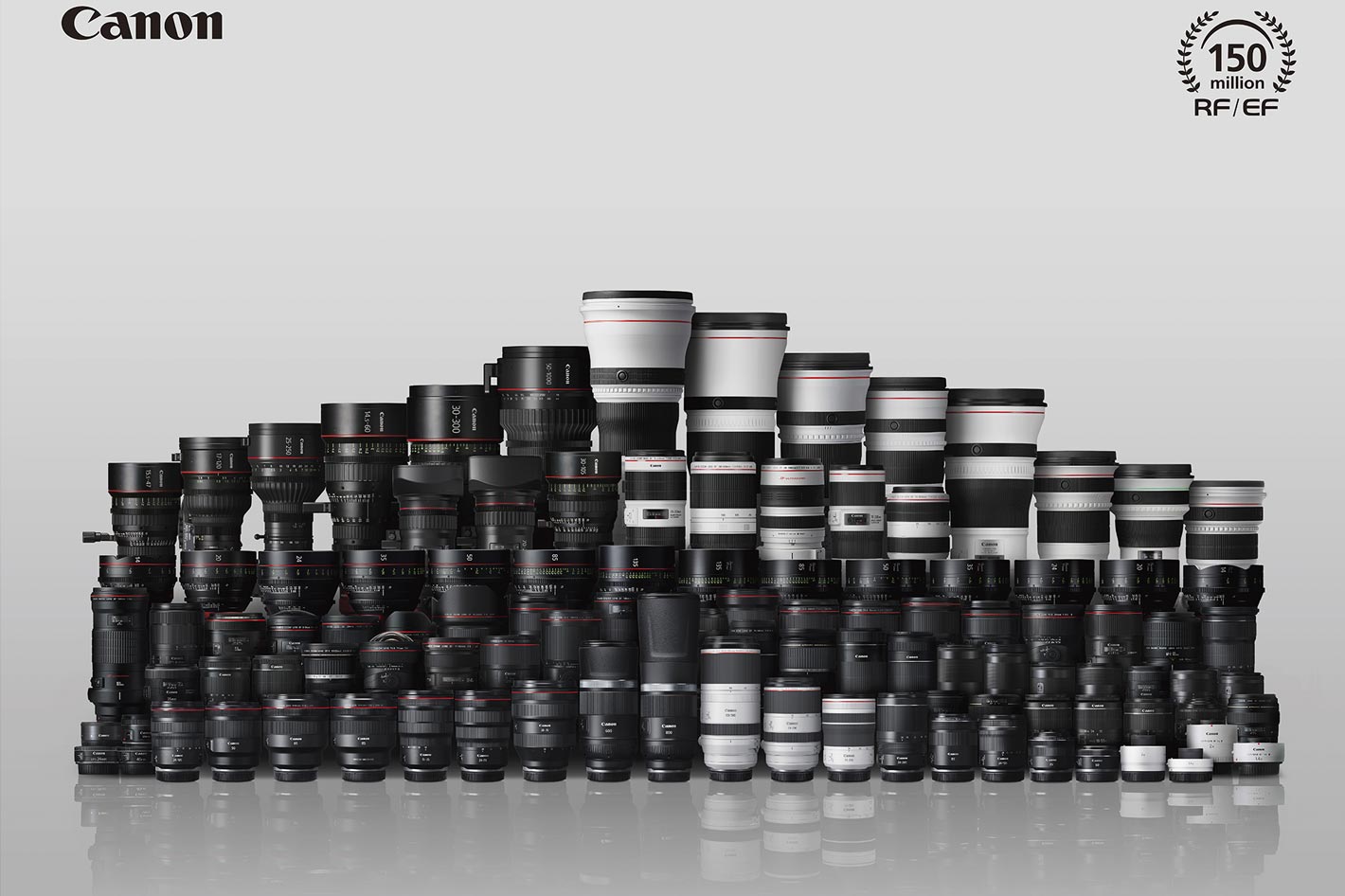 Canon celebrates a significant milestone with the production of 150 million interchangeable RF and EF lenses, a total reached January 2021. But Canon’s total lens production is, in fact, much larger.
Canon celebrates a significant milestone with the production of 150 million interchangeable RF and EF lenses, a total reached January 2021. But Canon’s total lens production is, in fact, much larger.
It’s in the news everywhere: Canon reached a new lens-manufacturing milestone with the production in January 2021, of the company’s 150-millionth RF and EF series interchangeable lens for EOS cameras— an RF70-200mm F2.8 L IS USM telephoto zoom lens (released in November 2019). The total, it’s important to write this again, includes EF, EF-S, RF, EF-M and EF Cinema lenses and lens extenders.
 Production of interchangeable EF lenses for Canon EOS-series AF (Autofocus) single-lens reflex film cameras began in 1987 at the company’s Utsunomiya lant. Over the years, EF lenses have gained support from a wide range of users and production has since expanded to a total of four manufacturing bases, including Canon Inc., Taiwan; Canon Opto (Malaysia) Sdn. Bhd.; and Oita Canon Inc. in southern Japan.
Production of interchangeable EF lenses for Canon EOS-series AF (Autofocus) single-lens reflex film cameras began in 1987 at the company’s Utsunomiya lant. Over the years, EF lenses have gained support from a wide range of users and production has since expanded to a total of four manufacturing bases, including Canon Inc., Taiwan; Canon Opto (Malaysia) Sdn. Bhd.; and Oita Canon Inc. in southern Japan.
EF lens production passed the 10-million-unit mark in 1995 and crossed the 50-million-unit threshold in 2009. In April 2014, the company celebrated its first-in-the-world achievement of having manufactured 100 million interchangeable lenses, and now, setting a new world record for the most interchangeable lenses produced, Canon manufactured its 150-millionth RF and EF lens in January 2021. Laid end-to-end (calculated based the length of the lens’ bodies and based on Canon research), all of the RF and EF lenses Canon has manufactured thus far would measure approximately 7,736 miles in length — nearly equivalent to the Earth’s diameter, which measures approximately 7,917 miles.
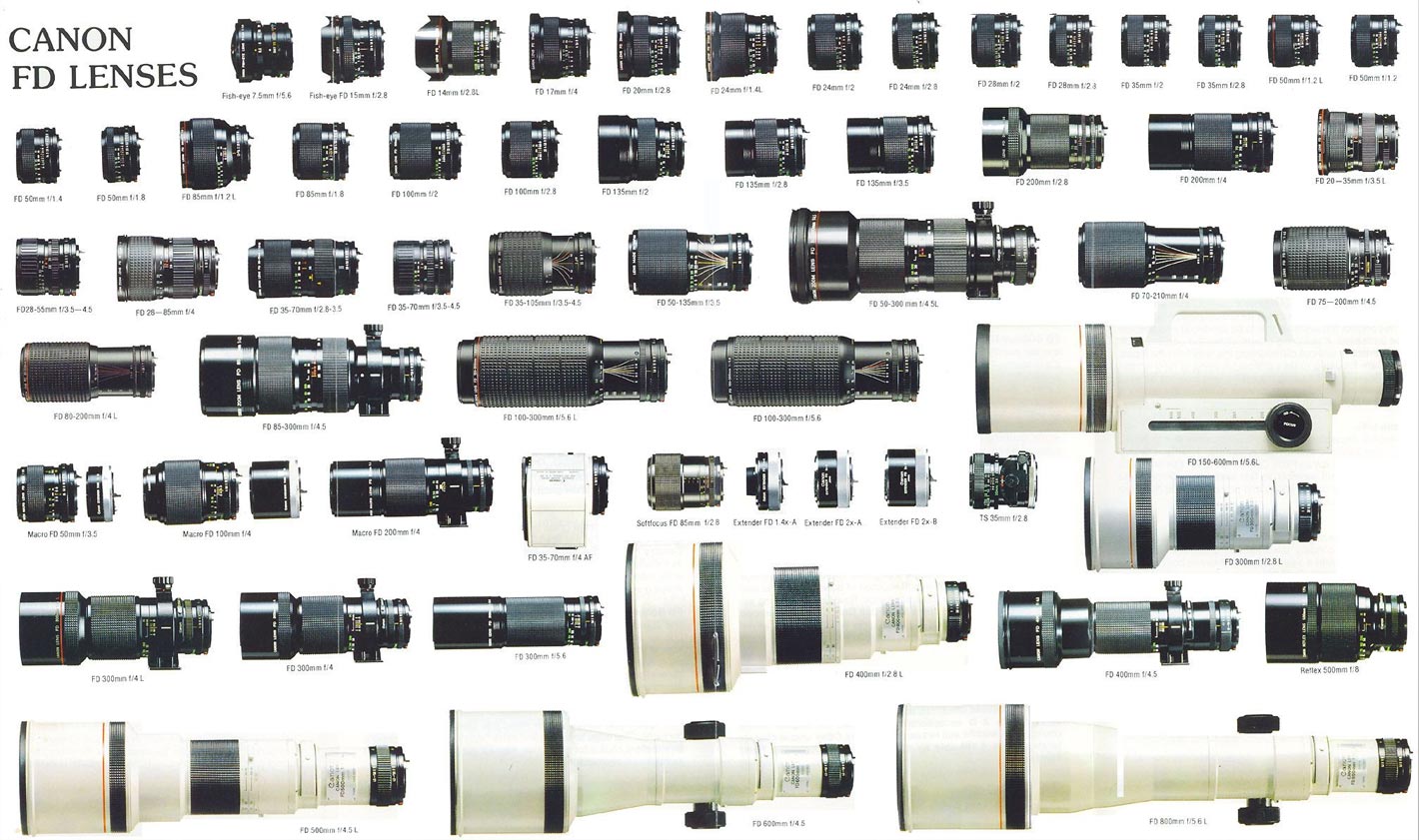 FD mount produced for nearly 25 years
FD mount produced for nearly 25 years
Canon’s proprietary EF lenses, launched in March 1987 along with the EOS SLR camera system, have continued to evolve since their introduction, leading the industry through the incorporation of a wide range of innovative technologies, including such world’s firsts (among interchangeable SLR camera lenses. Based on Canon research.) as the Ultrasonic Motor (USM), Image Stabilizer (IS) technology, and a multilayered diffractive optical (DO) element.
It’s a times like these that it makes sense to look back before turning a page to modern day lenses. Because, before EF mount lenses where introduced, Canon produced millions of FD lenses, first introduced in 1971, with the Canon F-1 camera, to replace Canon’s original FL mount (which replaced the R mount). The FD mount was very popular in the 70s and 80s – last century. The system survived until mid-90s, even though Canon introduced their EOS SLRs and EF lenses in 1987.
In fact, when Canon introduced the New F-1 SLR, in 1981, the company made a commitment to support it and the FD system for 10 years. The production of FD mount lenses can be traced all the way into 1993, meaning that it lasted for nearly a quarter of a century. Over that period Canon introduced 134 different FD lenses ranging from 7.5mm through 1,200mm in seventeen different fixed focal lengths and nineteen different zoom ranges, one of the most, if not the most, extensive manual focus lens lines ever produced, according to some.
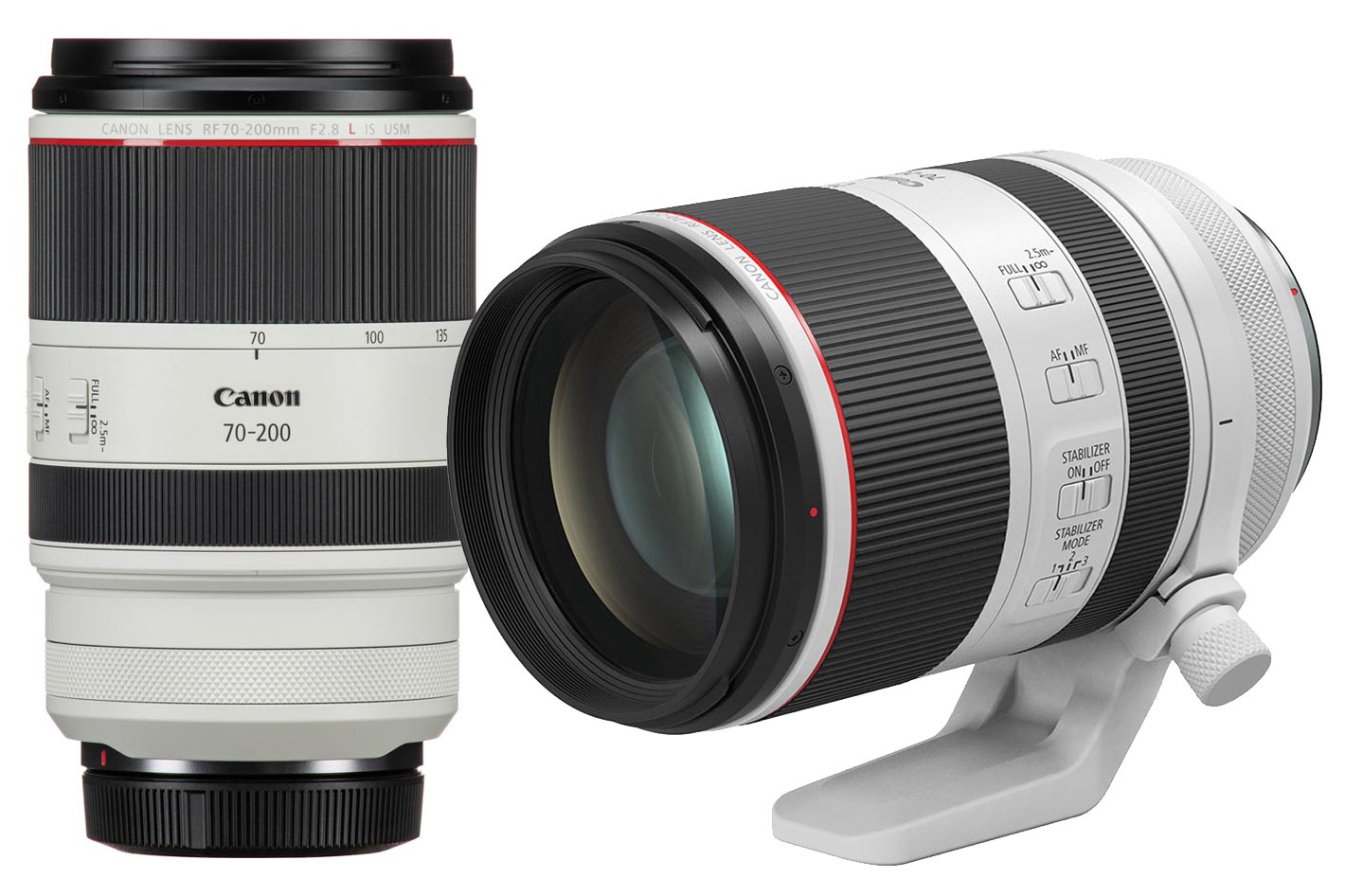
Moving to the EOS R system
I’ve contributed to the number of FD lenses acquired by photographers in that period: besides multiple bodies, ranging for the FTb QL to the T90 – and a battered black A-1 that was stolen and I still miss to this day – I’ve had some 15 FD lenses, ranging from wide-angle to telephoto. I’ve equally contributed to the number of EF lenses produced by Canon: besides some lenses that were broken and one way or another were discarded, I still have 15 lenses – including two 100-400mm and three macro, two 100mm and one 60mm – and five EOS bodies, not counting a Cinema EOS camera.
In 2018, Canon introduced the EOS R system and the RF series lenses, which, according to the company, pursues new heights of quality under the core concept of “Speed, Comfort and High Image Quality.” Today, the company’s extensive RF and EF lens series lineup currently comprises a total of 118 models (includes four lens extenders. As of February 3, 2021), expanding the possibilities for image capture.
In addition, thanks to the extensive lineup of lenses, Canon has maintained the number one market share for digital interchangeable-lens cameras since 2003 — a total of 17 years (in terms of market share by number of units sold. Based on Canon research) — and in September 2019, the company celebrated the production of 100 million EOS-series interchangeable-lens cameras. That’s a number to which I’ve also contributed, I guess, since I acquired my first EOS D30 with a 1GB IBM Microdrive HDD, a kit sold by Canon in 2001.
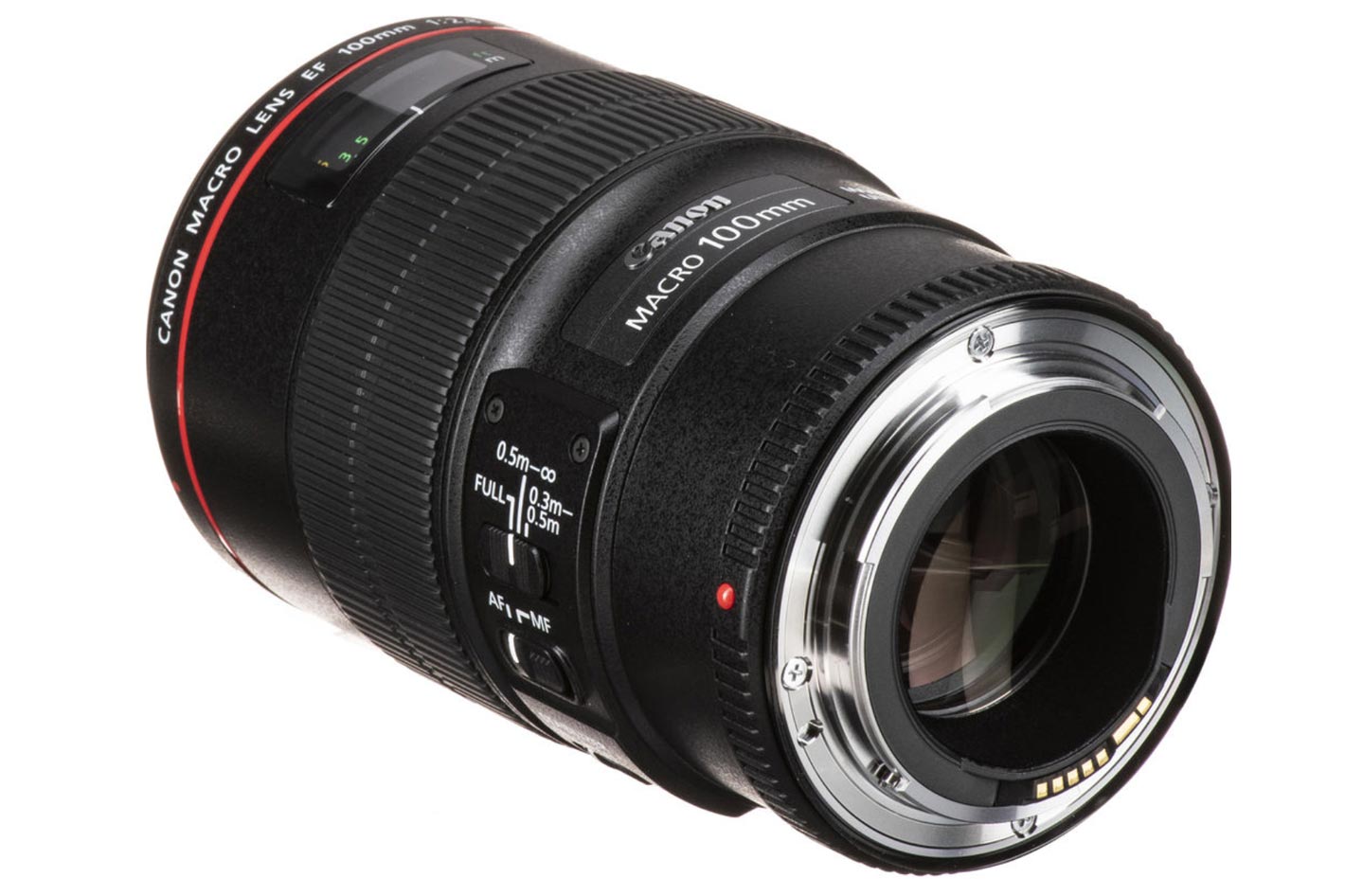 A timeline for EF and RF lenses
A timeline for EF and RF lenses
Canon will continue refining its imaging technologies centered on its RF and EF lens lineup, striving to cater to the varying needs of photographers — from first-time users to advanced amateurs and professionals — while contributing to expanding the photographic and video imaging culture.
Here are some of the highlights of Canon’s lens history:
EF300mm f/2.8L USM – November 1987
World’s first (among interchangeable SLR camera lenses) use of a lens-based Ultrasonic Motor (USM). USM technology delivers fast autofocusing thanks to its high torque and responsiveness. By converting ultrasonic vibrations into rotational energy, the technology makes possible quiet, smooth AF drive performance.
As of February 3, 2021, production for this lens has already been discontinued. Successor: EF300mm f/2.8L IS II USM (released in August 2011).
EF75-300mm f/4-5.6 IS USM – September 1995
World’s first (among interchangeable SLR camera lenses) use of Image Stabilizer (IS) technology. Users can see the results of IS technology through the viewfinder. Delivering high precision and stability for superb image stabilization results, this technology expands the possibilities for handheld photography.
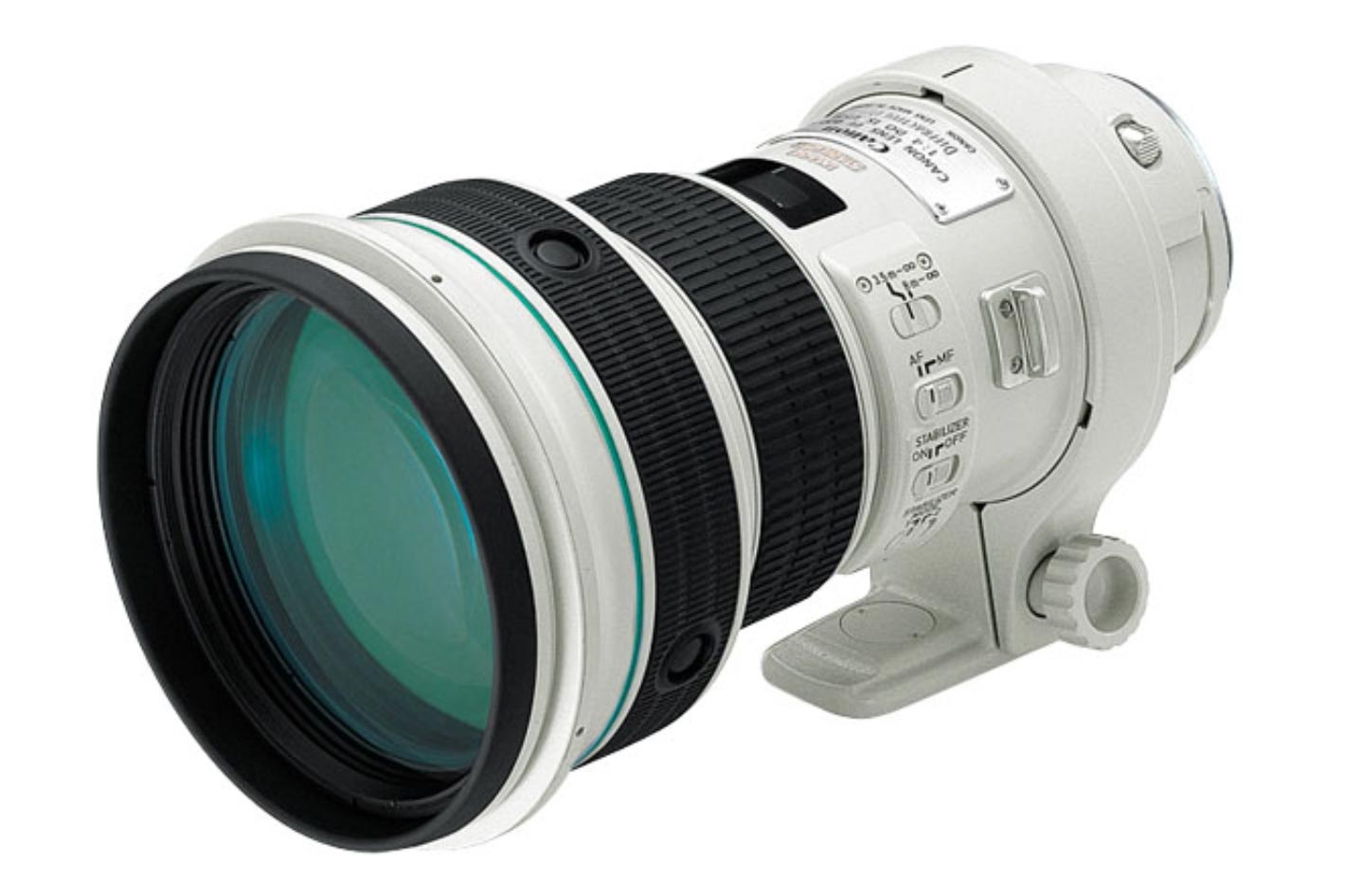 EF400mm f/4 DO IS USM – December 2001
EF400mm f/4 DO IS USM – December 2001
World’s first (among interchangeable SLR camera lenses) use of a diffractive optical (DO) lens element. Diffraction is an optical phenomenon in which light waves bend as they pass around the edges of an object. DO lens elements use this phenomenon to correct for a variety of aberrations by controlling the path that light travels.
As of February 3, 2021, 2016, production for this lens has already been discontinued. Successor: EF400 f/4 DO IS II USM (released in November 2014)
EF24mm f/1.4L II USM – December 2008
World’s first (among photography lenses) use of Subwavelength Structure Coating (SWC). SWC technology helps to minimize reflections by aligning countless wedge-shaped structures more minute than the wavelength of visible light on the surface of a camera lens.
EF100mm f/2.8L Macro IS USM – October 2009
World’s first (among interchangeable SLR camera lenses) use of Hybrid IS, which compensates for both angle camera shake and shift camera shake. Employing an algorithm, Hybrid IS optimally adjusts for camera shake based on information gathered by two sensors located in the lens. By precisely driving the optical correction system, the technology used in the EF100mm f/2.8L Macro IS USM simultaneously corrects for angle and shift camera shake.
EF8-15mm f/4L Fisheye USM – July 2011
World’s first (among interchangeable SLR camera lenses) fisheye lens to deliver both 180-degree diagonal angle of view and 180-degree circular fisheye. The EF8-15mm f/4L Fisheye USM enables the capture of images with dramatic deformations, exaggerated perspectives and extreme depths of field, making possible images that are significantly distorted, similar to what a fish might see were it to look skyward from under the water surface.
EF200-400mm f/4L IS USM Extender 1.4x – May 2013
World’s first7 super-telephoto zoom lens to employ an internal extender. Featuring a built-in 1.4x extender, the EF200-400mm f/4L IS USM Extender 1.4x’s zoom range can be expanded with a simple one-touch operation even in locations where users are unable to switch lenses.
EF11-24mm f/4L USM – February 2015
World’s first (among interchangeable SLR camera lenses) lens offering ultra-wide-angle 11 mm minimum focal length. In addition to achieving the world’s widest angle of view starting at a minimum focal length of 11 mm, the EF11-24mm f/4L USM effectively corrects for aberrations commonly associated with ultra-wide-angle lenses, delivering superb image-quality performance
RF28-70mm F2 L USM – December 2018
World’s first (among interchangeable lenses supporting autofocus across the entire standard zoom range and compatible with 35mm equivalent full-frame sensor cameras) standard zoom lens to deliver f/2 aperture across the entire zoom range. Employs a large internal mount diameter and a short back focus to realize an f/2 aperture across the entire zoom range, a feat which was considerably difficult for EF series lenses.

Filmtools
Filmmakers go-to destination for pre-production, production & post production equipment!
Shop Now